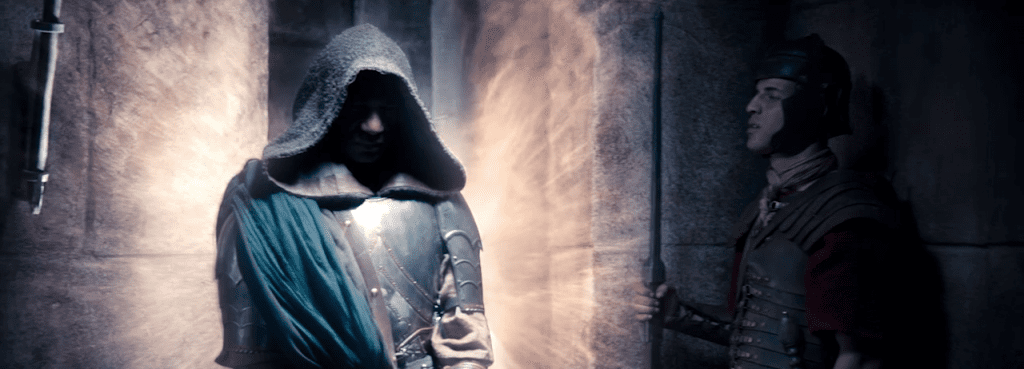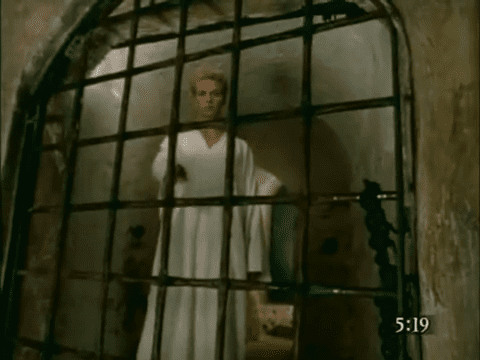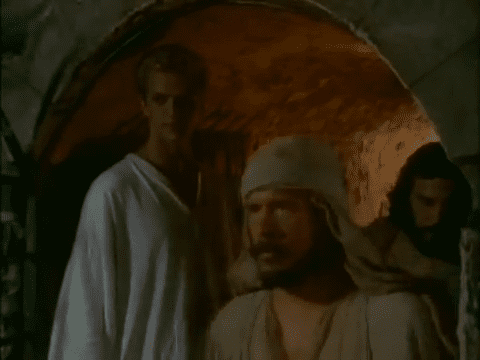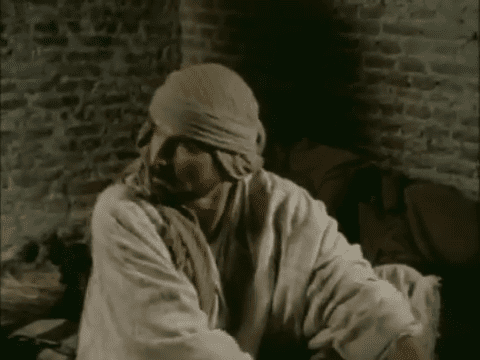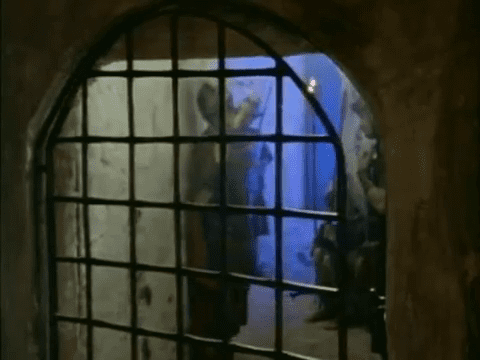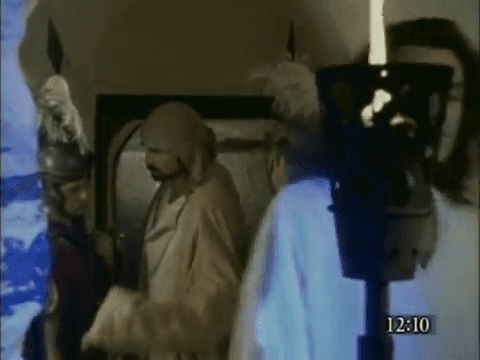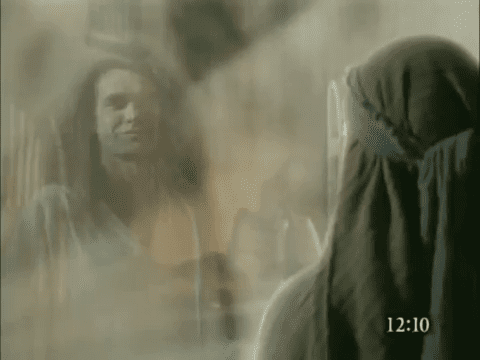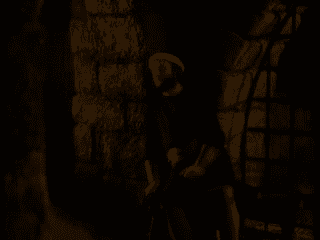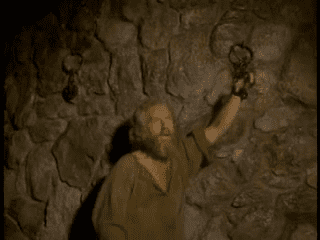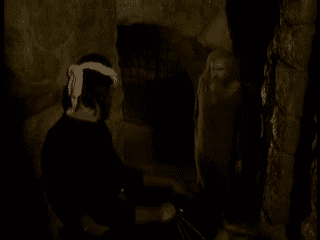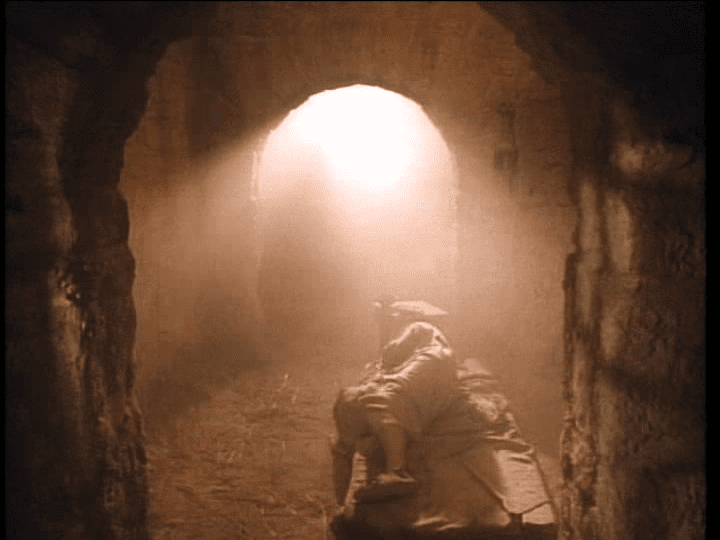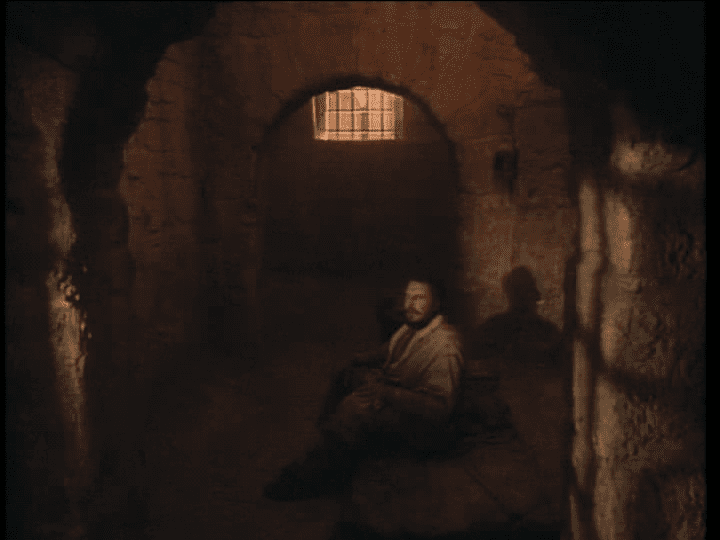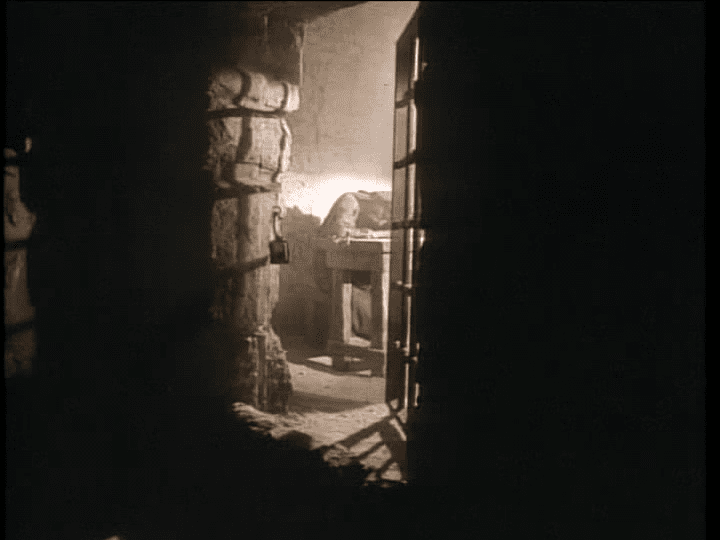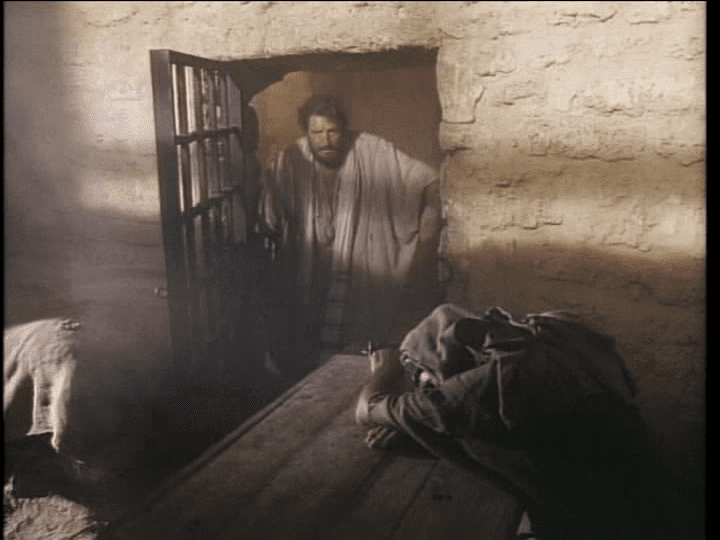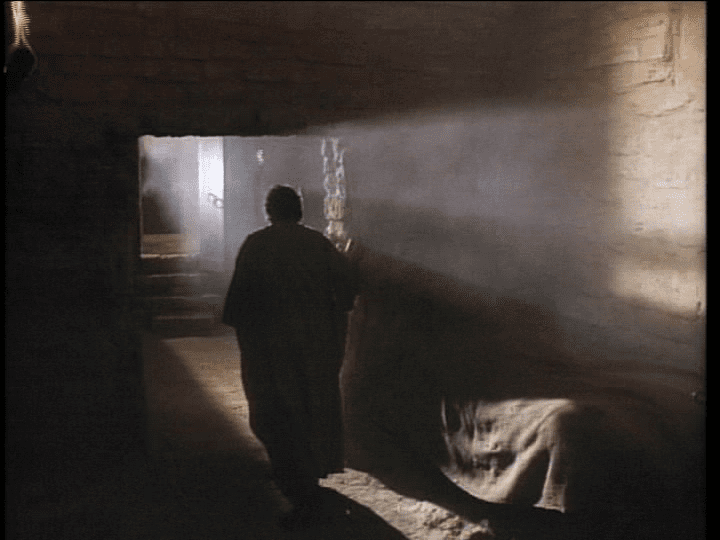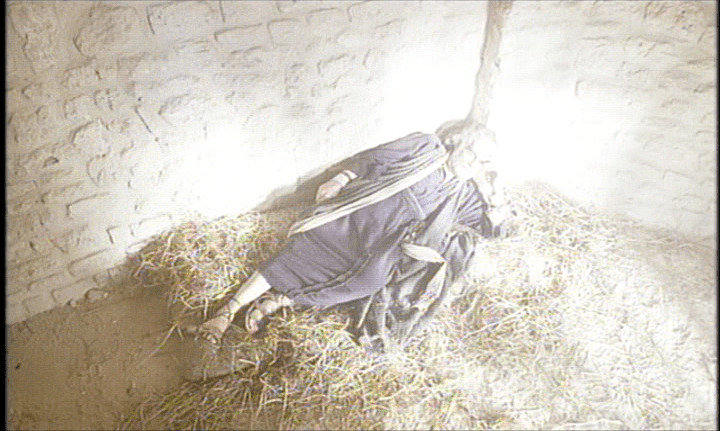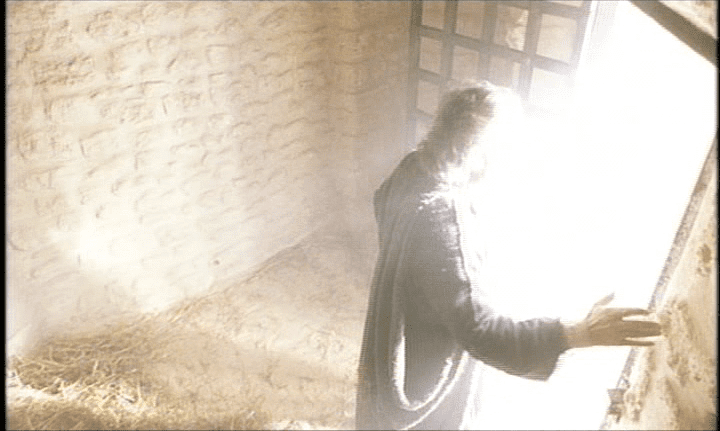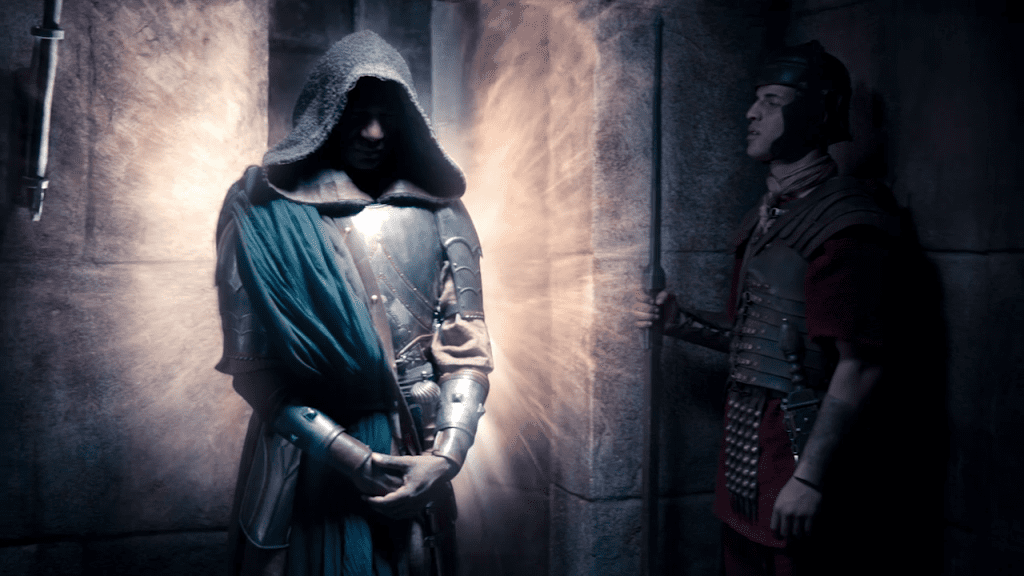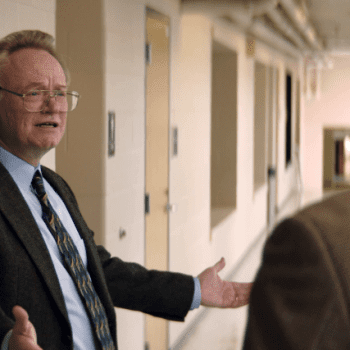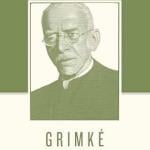One of several things that sets A.D. The Bible Continues apart from previous adaptations of the book of Acts is its depiction of the angels. While some films and TV shows have shied away from any sort of straightforward portrayal of the angels, A.D. puts them front and centre — and next week’s episode will be no different.
Mark Burnett (who has finally shaved his beard!) and Roma Downey released a new clip today that shows an angel setting the apostles free from prison. Here it is:
A few comments about this clip, and its place in cinematic adaptations of Acts:
First, there are two angel-driven jailbreaks in the book of Acts. In Acts 5, an angel sets “the apostles” free — the exact number, and who they were, isn’t specified beyond the fact that Peter was one of them — and in Acts 12, an angel sets Peter free.
The only film I can think of that has depicted both of these supernatural jailbreaks is the Visual Bible’s word-for-word adaptation of Acts, released in 1994.
Most films have tended to skip the escape from Acts 5 and include the escape from Acts 12, possibly because the latter escape has more built-in drama (James is executed, Herod Agrippa plans to execute Peter right after Passover, etc.), whereas the former escape kind of interrupts the drama without really affecting it (the apostles were arrested beforehand, and they are arrested again afterwards, so it may be more expedient, dramatically, to have them arrested just once before their trial).
A.D. — which will only get as far as Acts 10 this season — could be unique in depicting the escape from Acts 5 but, for now at least, not the escape from Acts 12.
A.D. is also that rare film that gives us a good look at the angel himself. Most films don’t — most films replace the angels with silent beams of light — possibly to retain an air of mystique, and possibly because the filmmakers can’t think of how to show an angel without the results looking kind of cheesy. A.D. is one of the bolder adaptations in this regard, though even its portrayal of the angel is restrained in some ways.
Here is how previous films have depicted these jailbreaks.
In its depiction of the Acts 5 escape, the Visual Bible shows an angel with blonde hair standing outside the door as it swings open by itself:
The angel stands in the doorway as the apostles leave…
…and then vanishes with help from the special-effects department:
In its depiction of the Acts 12 escape, the Visual Bible has a dark-haired angel appear in the prison cell via the same special effect we saw earlier:
Peter looks to the side as he gets dressed…
…and sees that the soldiers are sleeping:
The prison door opens by itself…
…and as Peter follows the angel outside, he looks at the sentries, who are standing but seem to be asleep (eyes closed, heads tilted down):
Once they’re out in the street, the angel vanishes the same way he arrived:
The 1981 miniseries Peter and Paul depicts the Acts 12 escape only, and in this version, Peter is chained to the wall, not sleeping between two soldiers:
The guards are asleep:
Instead of an angel, Peter sees a bright light:
The chains break, and Peter’s arms are free — though he is still wearing the manacles that the soldiers put on him:
Peter walks past another sleeping guard on his way out of the prison:
The 1985 miniseries A.D. Anno Domini also depicts the Acts 12 scene only, and in this version, too, we don’t really see the angel — though we do hear him! Peter is sleeping alone in his cell when a light fills it, and a voice says, “Wake, Peter. Rise!”:
(If you look very closely while watching this scene, you can make out a person walking up to the prison bars in the background just before the light floods the room, but the person in question isn’t easy to see when you capture individual frames.)
Peter wakes up, the light fades, and Peter looks to the side…
…where he sees that the door to his cell is open:
Peter steps outside and sees a sleeping guard…
…and he exits in the direction of another bright light:
The 2005 miniseries Saint Peter rearranges the chronology somewhat.
In this version, Peter escapes from prison not after he is arrested by the Sanhedrin in Acts 5 or by Herod Agrippa in Acts 12; instead, he is arrested by Saul (aka Paul) after the stoning of Stephen in Acts 7, and he escapes from prison immediately after Saul has his road-to-Damascus experience in Acts 9. His escape is depicted in a single wordless shot, which begins with a bright light flooding Peter’s cell…
…and ends with Peter stepping through the open door:
A.D. The Bible Continues, for its part, mixes the approaches of the previous films.
On the one hand, it actually shows the angel, just like the Visual Bible did, but instead of some guy in a cheap white robe, he’s a figure who radiates supernatural energy. (Incidentally, he’s the same angel who rolled the stone away from the tomb in the first episode and was waiting for Jesus on the mountain peak in the second episode.)
On the other hand, this angel doesn’t speak, even though the angel in the Bible does. And once again, the guards seem to be asleep — though they are also standing, which suggests that they are experiencing some sort of supernaturally induced sleep.
And that’s about it. Roberto Rossellini’s 1969 miniseries Atti degli apostoli (aka Acts of the Apostles) skips past the Acts 5 jailbreak and relegates the Acts 12 jailbreak to an anecdote told by Peter after it happens. And as far as I can recall, none of the films that focus on Paul specifically have depicted this incident from the life of Peter.
If I’m forgetting anything, though, let me know in the comments!
By the way: Apart from A.D. The Bible Continues’ Adam Levy, the actors playing Peter in these scenes are James Brolin, Robert Foxworth, Denis Quilley and Omar Sharif.


